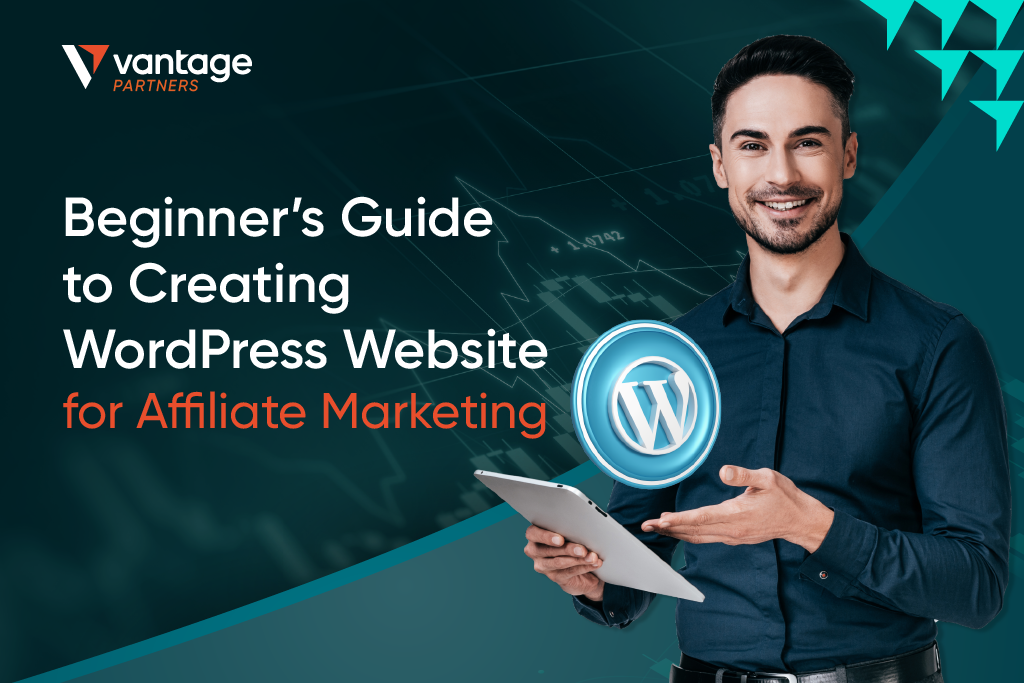
In this beginner’s guide, we will discuss the steps to create a website for your affiliate marketing.
Affiliate marketing has fast become one of the most popular ways in this day and age to make money online. While affiliate marketing can be done without a website, having a website can significantly increase your chances of success. With this guide in hand, you’ll be well on your way to creating your first affiliate marketing website using WordPress.
How can having a website benefit you?
“Is it necessary to own a website for my affiliate marketing?”
As a business owner, the decision is yours. While a website might not be entirely necessary, it can play a part in helping with your conversion rates.
When you have your own website, your marketing effort will look more credible to customers. With content catered to your affiliate marketing business published on your website, it also offers your clients the information they need, which could result in a higher conversion.
Apart from credibility, your website is also useful for leading customers along various journeys in the content funnel. A content funnel is a marketing strategy that involves creating and delivering a series of content that guides potential customers through the various stages of the buying process, with the goal of converting them into paying customers. In this sense, your website plays a crucial part in the advertising landscape, where it can be used to not only convert customers but also retarget website visitors and invite past visitors to revisit your website.
Here are some other reasons why affiliate marketing, particularly with a website, is popular:
- It doesn’t need a lot of startup money. Even on a small budget, anyone can start a blog and write posts.
- Automation is an option. You can hire people to manage and create content for your website, or you can use tools to aid you in the process.
- It’s flexible and scalable. Having your own affiliate marketing website allows you to work from anywhere as well as the ability to reach a wider range of audience.
The whole process of building your own website may seem intimidating and overwhelming at first, and you might even think you need complex skills like web designing and code to start. However, it is actually quite the opposite. The act of creating the website is the easy part. The hard part is making your site profitable.
Websites for affiliate marketing are designed to direct visitors to goods and services that meet their needs while also featuring the affiliate programmes that you’ve joined, which will earn you a referral commission fee. The aim is to help your visitor find what they’re looking for while also earning commissions in the process. Take Vantage’s CPA Affiliate Program, for instance, you can earn up to $1200, and the more clients you refer, the greater your income!
Before jumping into the steps of building a WordPress website, there are actually 2 types of WordPress sites: WordPress.org vs WordPress.com.
WordPress.com allows you to create a website using the pre-installed WordPress programme on managed hosting. With less maintenance to worry about, you can concentrate on your website.
WordPress.org, on the other hand, is the website where you can download the software. After you’ve downloaded it, you’ll need to look for and join a third-party hosting provider, install WordPress and then create and maintain your website on your own.
So if you chose to install and run a self-hosted website, also known as WordPress.org, then read on to find out how you can build and customise your very own website!
How to Build a WordPress Website
Now that you understand why it’s important to have a website for your affiliate marketing let’s get into the first important step: Hosting.
Step 1: Pick a Domain Name and Hosting Provider
The first step is to pick a domain name and a hosting provider. Hosting is where your website files are stored and made available to the public. It’s important to choose a hosting provider that specialises in WordPress hosting, as this will optimise your website’s performance and security.
If this is the first time you are building a website, you might be wondering, what in the world is hosting? What is WordPress hosting?
In order for you to build a successful website, it’s important to understand these terms. So let’s dive right in!
Simply put, WordPress hosting is hosting that has been enhanced better to meet the performance and security requirements of WordPress. This provides your visitors with faster loading speeds and a better overall site performance.
Here are some recommended WordPress hosts you can explore and try out:
- Site Ground – offers shared hosting with some managed features beginning at $1.99 per month.
- A2 Hosting – starts at $2.99 a month and features surprisingly quick WordPress hosting speeds.
- Flywheel – offers managed WordPress hosting and has a monthly starting price of $13.
- Kinsta – high-end managed WordPress hosting that starts at $30 per month.
Step 2: Download a WordPress Content Management System (CMS)
Once you have your hosting and domain name set up, you can download WordPress Content Management System (CMS). A non-specialised hosting service is not tailored to a CMS like WordPress and instead optimises its servers for general use.
You can do so from the WordPress official website. WordPress is the most user-friendly and straightforward platform that enables you to create an affiliate website.
WordPress websites are simple to create and offer features that make web development easier. The advanced features of the website are enhanced by using the appropriate available themes and plugins.
Step 3: Pick a suitable affiliate theme
Choosing a theme is one of the most important steps in setting up your website. Your website’s theme acts as an online storefront and doubles as its primary component. It’s important to choose a theme that suits your niche and audience, as well as your whole brand. There are hundreds of options available, so take your time in selecting one that aligns with your affiliate marketing strategy. If you’d like to dive a little deeper and find out the best WordPress themes for your affiliate marketing, read this article!
There are two ways to go about selecting your WordPress theme: Themeforest or Elementor.
Themeforest is a marketplace that offers pre-designed website themes and templates for various content management systems (CMS). The themes on Themeforest are created and designed to fit the needs of a website, such as themes and templates for an e-commerce platform.
Elementor, on the other hand, allows users to create custom page layouts and designs using a drag-and-drop interface and a library of pre-designed widgets. The tool requires no coding skills and offers a user-friendly interface for creating custom web pages.
Step 4: Install and activate the essential plugins
Plugins are add-ons that extend the functionality of your website. There are thousands of plugins available for WordPress, so it’s important to choose the ones that meet your needs. You can look up free plugins at WordPress.org or visit Themeforest.net for paid plugins. Prior to choosing, you can research their features, advantages, and pros and cons online.

Tip: Always look at the versions and updates of each theme as well as the responses.
Step 5: Start creating content
Now that your website is set up, it’s time to start creating content. The more articles you have on your website, the easier it will be to increase organic traffic. Make sure to write frequently and focus on a keyword associated with your niche to draw readers who are searching for that term.
Tip: Ensure that the article you produce is Search Engine Optimisation SEO friendly. This means including keywords that are relevant to your topic in your articles. You can also use writing tools such as Grammarly to help you with ensuring your content is grammarly accurate.
Finally, be patient; it takes time and hard work for a new website to gain traffic and establish itself.
Get started with Vantage
As with all things, creating a website for your affiliate marketing takes time and effort, but it can be a rewarding and lucrative venture if done right. Remember to choose a domain name, a hosting provider, and a theme that aligns with your niche and audience. Install essential plugins, create high-quality content, and optimise your website for search engines.
Check out Vantage Partner’s blog and give us a follow on our social media channels on Facebook, Instagram, LinkedIn and Telegram so you can keep an eye out for more future marketing content like this one.
Disclaimer
Any information provided by Vantage to Introducing Brokers and CPA Partners is for general informational purposes only. Vantage does not guarantee the accuracy, completeness, or timeliness of the material and assumes no liability for errors or omissions. Reliance on this information is at the recipient's own risk.
This material is not financial or investment advice and should not be considered a recommendation or endorsement of any product or strategy. Introducing Brokers and CPA Partners must comply with all regulations when referring clients and must not misrepresent Vantage's services.
Vantage makes no guarantees regarding financial instruments' performance. Clients referred are responsible for their own decisions and should seek professional advice. Client acceptance is subject to applicable laws and regulations.
